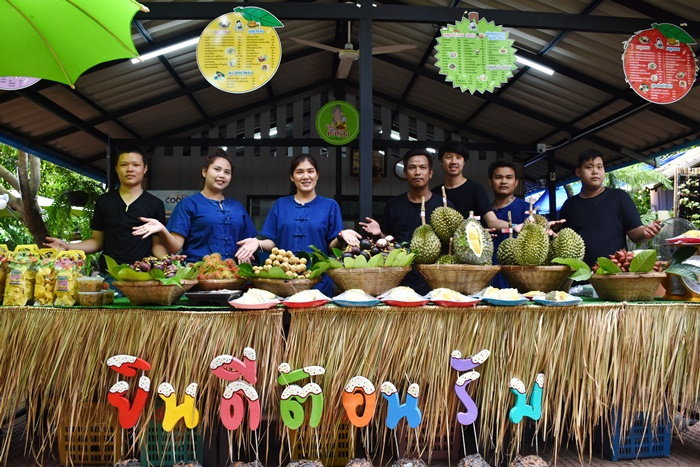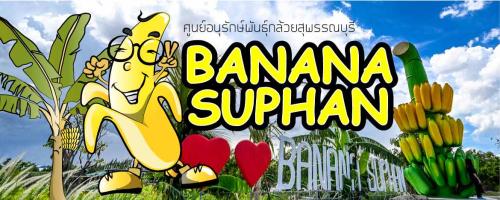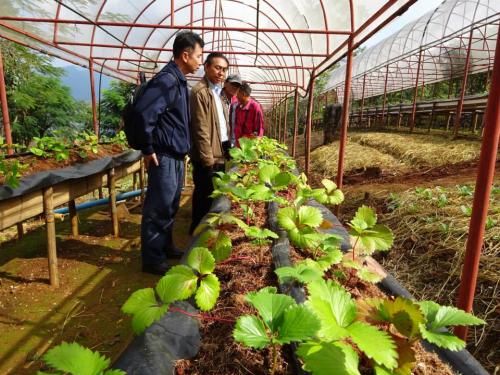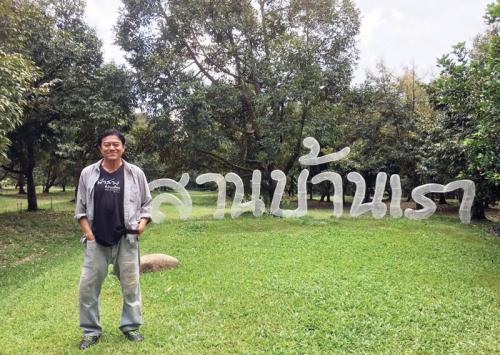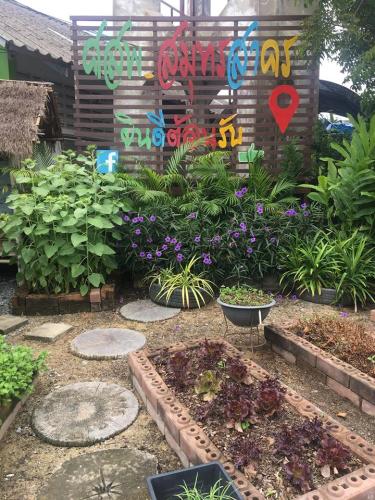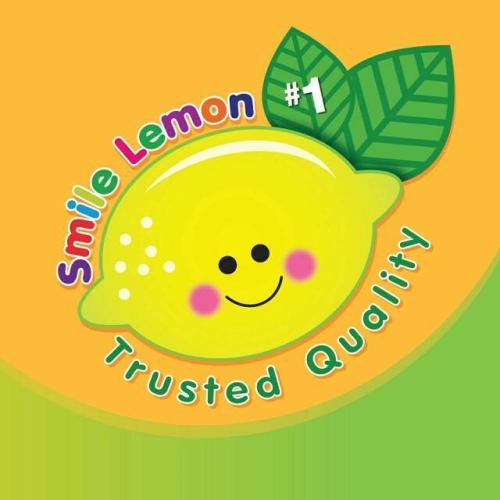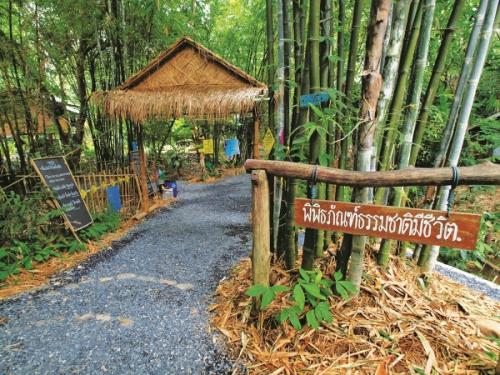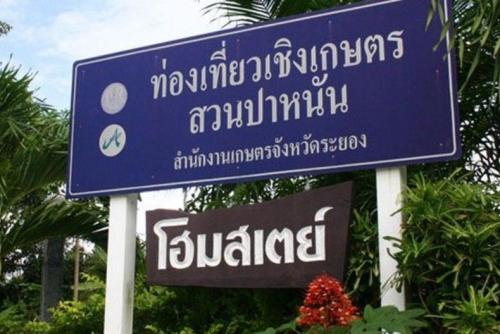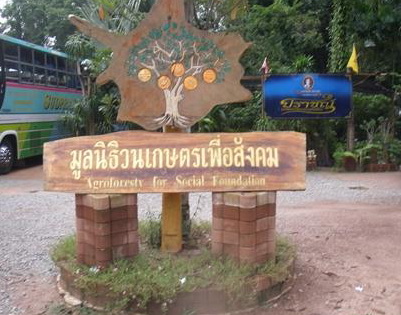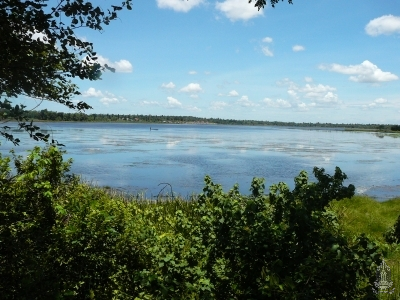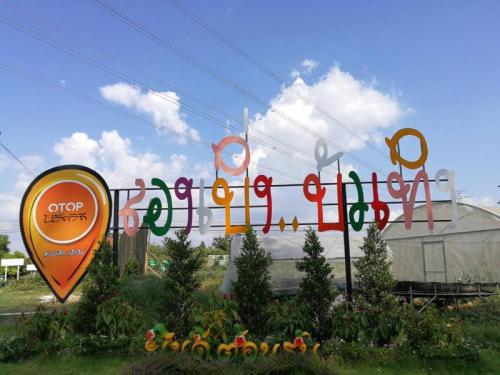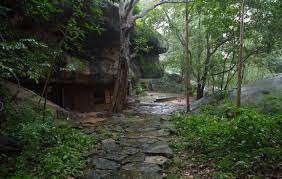Weather
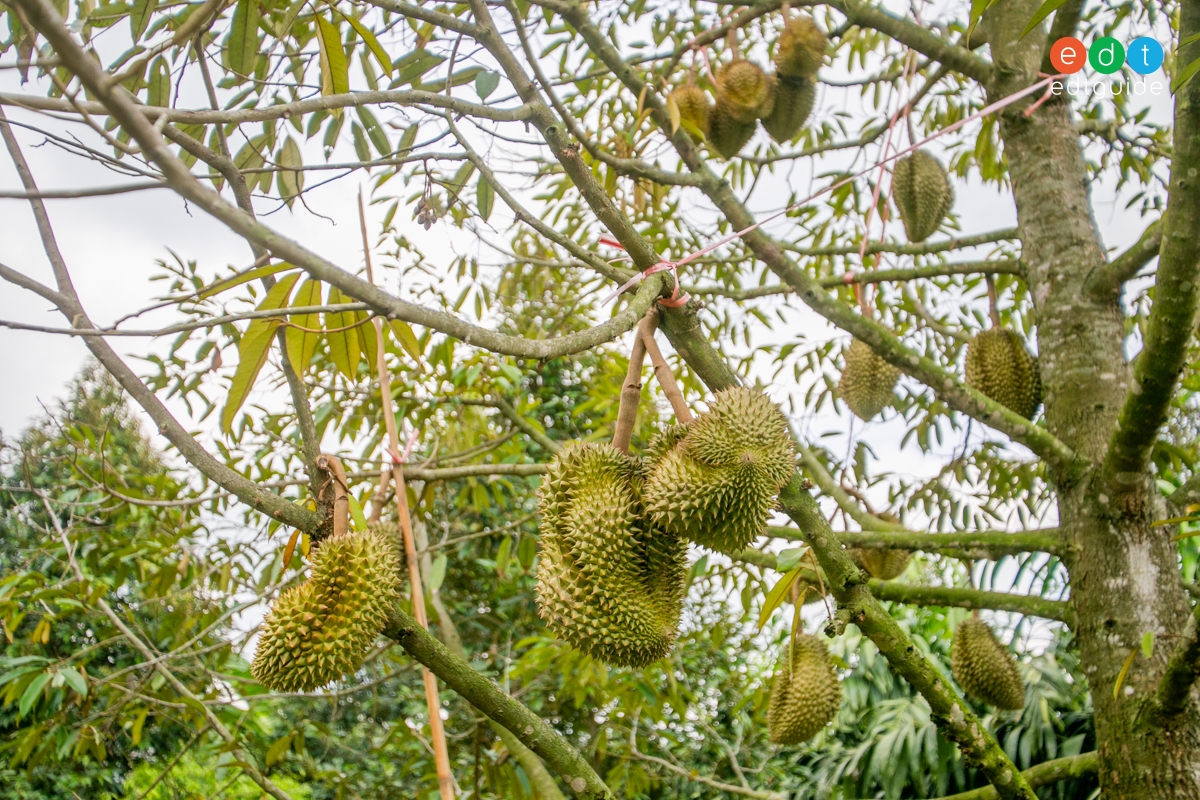
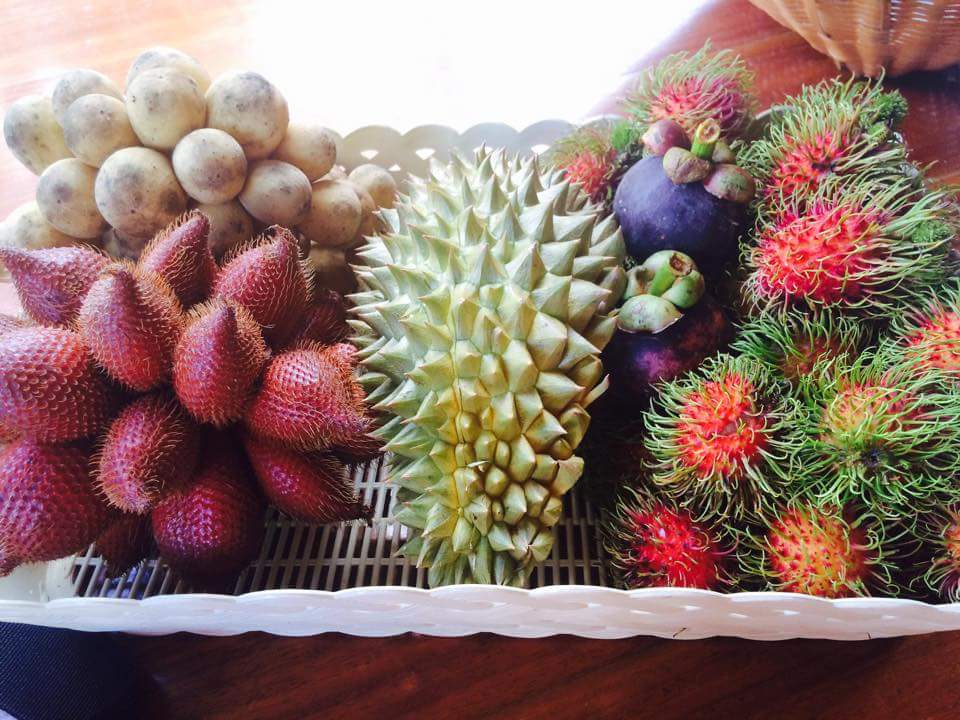
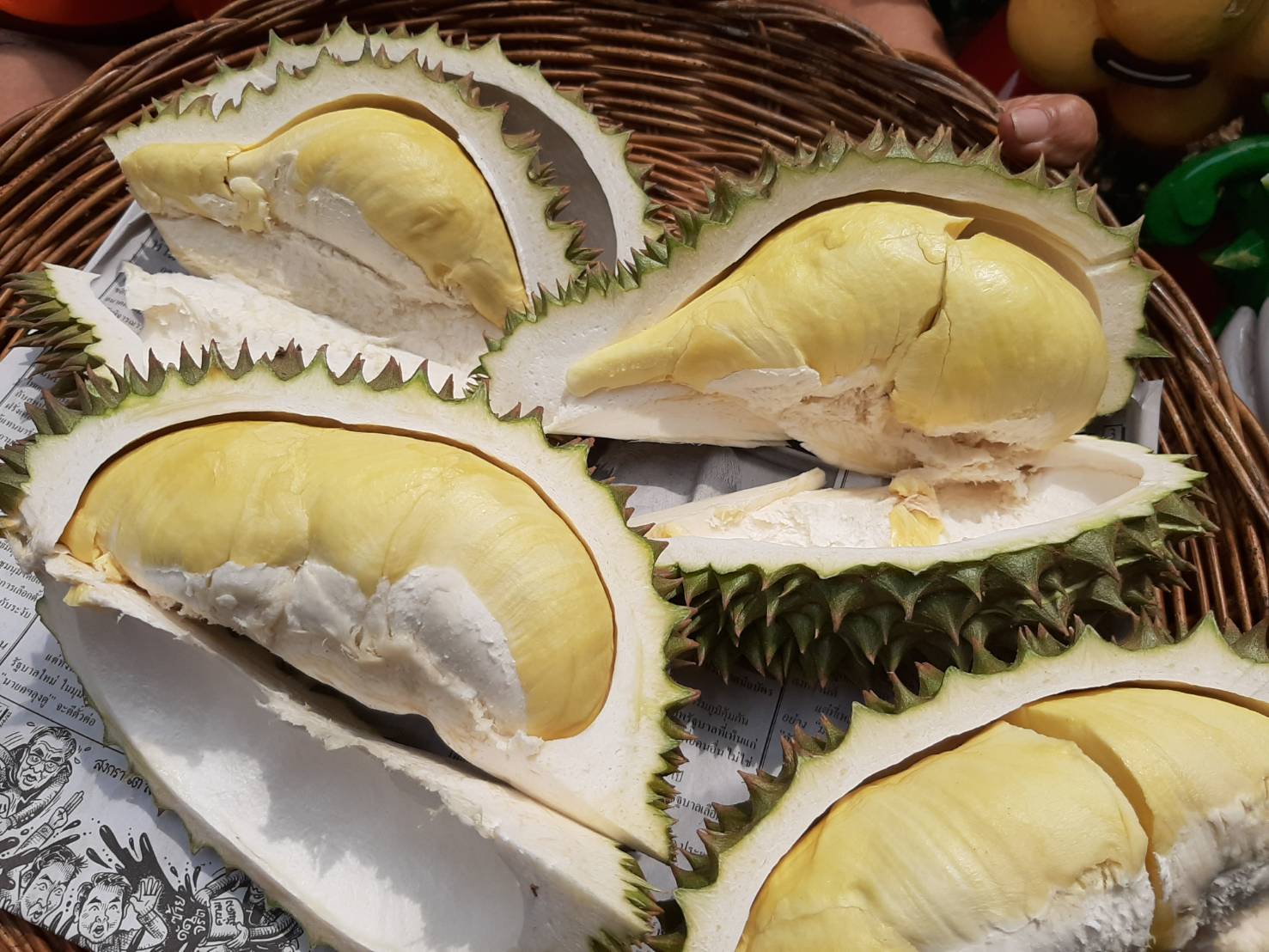
Closed
Business hours
• Sunday
: 09:00 - 16:00
• Monday
: 09:00 - 16:00
• Tuesday
: 09:00 - 16:00
• Wednesday
: 09:00 - 16:00
• Thursday
: 09:00 - 16:00
• Friday
: 09:00 - 16:00
• Saturday
: 09:00 - 16:00
Note
: -
Map
Review Score
0
Information
Enjoyable with the fullest tour of fruits buffet tasting such as durian, rambutan, mangosteen, longkong, on an area of 41,600 square meters. Watch a demonstration of durian harvesting and selling processed fruits.
Source
Thailand Tourism Directory
Recommended
Entrance fees
• Entrance fees: Non-fee
• Remark : -
Review (0)
Write Review
0
จาก 5.0
Availability
Value
Service
Relate Agritourism
Suphanburi Banana Conservation Center: It is a sufficiency agricultural community enterprise, responsible for the conservation of rare banana species in Thailand; and it has collected up to 108 banana species, especially the species of Suphan Buri itself.
Suphan Buri
Winter Flowers Learning Plot
- Cymbidium orchid cut flowers
- convert tulips
Myrrh Learning Plot
- Rosemary
- Geranium
How to grow crops in conservation on the highlands learning plot
- Avocado
- Arabica coffee
- Macadamia
Methods for organizing activities
- There is a photo spot, parking lot, restroom available.
- Take a walk around the learning plots (flower plants, fragrant plants, conservation plants) and learn about propagation and planting/care
- There is a point for selling community products, products, vegetables, fruit trees, field crops.
- Drinks, coffee, tea, Jiaogulan are available.
- There is a house / tent camping service.
Participation of tourists
- See, taste, shop, community products, bag products, souvenirs, agricultural products, winter fruit trees, field crops, seasonal vegetables
- Take a photo, check-in, flower/tulip plots
- Take a walk around the learning plot inside the center
- Indulge in the atmosphere of the sea of mist in the winter of Chiang Rai.
Tour program:
2 days 1 night program
Day One
09.30 Depart from Mae Fah Luang International Airport, Chiang Rai, travel to Cherntawan Farm.
10.00 Stop for breakfast at “Phu Thian Resort” / “Jui Kung Pao”
11.00 Cherntawan Rai, study Dharma and the concept of the University of Buddhist Economics (Alternative educational institutions for development according to Buddhist economic philosophy) integrated natural agriculture
12.00 Depart from Cherntawan Farm Stop for a meal at "Lanna Tawanwa" restaurant.
13.00 Watch a demonstration of roasting Assam tea and making Miang, the original model by the farmer community, Mae Loi tea production community.
14.00 Depart from Mae Loi Tea Production Community Enterprise Group To Rai Ruen Ruen, Ngew Subdistrict, Thoeng District
14.30 See the beauty of the organic farm by the new generation, Snack from organic farming plots directly for health, learning and new experiences both principles and actions
15.00 Depart from Rai Ruen Ruen to Doi Pha Mon Center
17.00 Tribal dinner, grilling, activities around the bonfire. along with watching performances from ethnic youth farmers Tribal arts and culture from the community amidst nature and sunset
Day Two
04.30 Wake up, do personal tasks
05.00 Travel to the top of Phu Chi Fa Admire the beautiful natural scenery mountains and sea of clouds
06.00 Return to Doi Pha Mon Center
07.00 Have breakfast
08.00 Enjoy the agricultural activities of the center, Doi Pha Mon, see the fragrant plants, tulips, see the beauty of the Cymbidium plots and learn how to grow coffee, avocado and macadamias, taste fresh coffee. High quality from farmers
12.00 Take a break for lunch
13.00 Travel to Ban Phithak Thai Organic Coffee Producers Group.
13.30 Take a walk around the organic coffee plot by the farmers group of Ban Phithak Thai organic coffee producers. Join to study the process of growing good quality organic coffee. Buy souvenirs from ethnic communities
14.30 Travel to Chiang Rai Clock Tower Important landmarks of Chiang Rai
16.00 Buy community products Local food, souvenirs, souvenirs
Route links to other attractions:
1) Phu Chi Fa, Tub Tao Subdistrict, Thoeng District, 11 km distance
2) Pha Tang, Po Subdistrict, Wiang Kaen District, a distance of 36 km.
3) Doi Chom Dao, Tub Tao Subdistrict, Thoeng District, distance 6 km.
Chiang Rai
Baan Bua Thoeng Community, the learning center for sufficient living, mixed farming, organic agriculture, bio-composting resources, the benefits and use of bio-compost to agriculture, and the use of local wisdom in agricultural development to suit hot and dry climate of Northeast.
Ubon Ratchathani
"Banrao Durian Orchard" has various durian species to taste and feel a real texture of rare durians, which only a few people could experience this taste. This orchard is a place that growing varieties of durian with the best quality to be worthy of being a high-class fruit that has been known as "King of Fruits"
Rayong
It is organized as a learning point station in a systematic way such as
1.1. Orchid seed service station and an orchid seed room
1.2. Planting station for various orchid species and increasing the value of orchids
1.3. Ornamental plant planting and propagation station
1.4. Biological production (Trichoderma Beauveria BT), composting does not return to the pile of Mae Jo formula.
1.5. Earthworm, cricket and sloping station
1.6. Hydroponics and Sky Vegetable Planting Station
1.7. Various types of mushroom cultivation stations
1.8. Plant seedling cultivation station and food processing from mushrooms
1.9. Different types of fruit plant propagation stations
1.10. Integrated Agricultural Station according to the Sufficiency Economy Philosophy
(can be adjusted as appropriate)
Samut Sakhon
Integrated Agriculture Learning Center
Chachoengsao
There are no charges for visiting Bhumirak Dhamachart Centerm except if you come in groups and need to participate in the activities that the Center has arranged. Here is an excellent learning source, which provides you understanding of the meaning of the word “sufficient” and how to use resources to gain the most benefits and appreciate its value. The walk around this place is in a circle, starting from the Northern Zone to be excited with the planting of various types of bamboo in both ways as well as the prettiness of the bamboo bridge, the bamboo house near the lotus pond, and the bamboo toys. It is exhibited in this way so that we will know about the many benefits of bamboo, including the making of the water dripping trough for watering the trees and soil to replace people; walking up the small mountains to learn about the wild mountain; hydraulic ram pump is to use water to compress the water to the highland instead of using the water pump, wet fire break system, benefits of vetiver grass, and how to build the check dam. Then, walking though the Central Zone to learn about New Theory Agriculture for the farmers to gain benefits from their own land to its value; learning how to build the soiled house and many types of herbs. After that, walking though the Northeastern Zone to visit the rice bank; learning about the rice milling and how to raise the livestock, in which huge cows can be seen in the stalls; how to make compost for own use so that there is no need to buy chemical fertilizer, and learn about Hom Din, which is how to bring back to good soil for farming by covering the land. But how to do that? It is better to learning by yourself. Lastly, going into the Southern Zone to look at how to burn charcoal from bamboo; how to make Biodiesel, and learn about Kaem Ling Project. Moreover, throughout the Center, I have seen many big and small watercourses along the way. There are pools, agricultural beds to grow crops, Chai Phatthana Hydraulic Turbine, the growing of vetiver in water, and many other things. This is the end of the walk where we have received knowledge and enjoy an untiring walk. Walking around, looking, listening, and asking the officer relentlessly just because things that we think ‘we know’ become things we never knew before. This is because we are used to all these projects or theories but we have never practiced or actually touched.
How to travel: From Rangsit intersection, take the direction of Ong Kharak District. Head to use the route of Nakhon Nayok-Nang Rong Waterfall. Pass through Wang Takrai. Before reaching Nang Rong Waterfall for about 2 kilometers, turn right into Khun Dan Prakan Chon Dam Project. Go straight for about 3 kilometers until reaching the traffic circle (with the elephant statues). Go to the right to cross the bridge. When reaching the four-way intersection, turn right and go straight for 200 meters. The Center is on the left-hand side.
Nakhon Nayok
Panan garden has many types of fruit planted there, including rambutan, mangosteen, longkong, durian. The cost of visiting Panan garden during May - June, when the orchard is full of fruit is 200 baht per person (price subject to change). In addition, there is also accommodation in the orchard.
Rayong
Ban Santitham is located on the area of 16,000 square meters with more than 700 kind of healing herbs spread over the area. There is also a Thai wooden house which is used to exhibit a variety of ancient agricultural tools, and there is a barn, rice threshing and rice milling equipment display behind the house. In addition, a part of the house is reserved for youth camp with the space for recreation activities.
Chachoengsao
Kud Kaloeb is a large natural water source with clear water to see the fish; it is located in Tambon Nong Ped and Tambon Nong Hin. Originally, it was just a water source that people used for farming and only catch fish for a living. But, now, Yasothon has developed it into a tourist attraction and recreation venue by adjusting the landscape to be beautiful. It is where the Songkran Festival of the province is held every year. There are people who always come to visit and relax on holidays.
The convenient travelling to Kud Kaloeb is, starting from Yasothon - Amnat Charoen Road at km 14 (Ban Khamkerd, notice that there will be watermelons for sale along the road), turn left into Ban Nong Ngong, go to Ban Nong Bok - Ban Non Sawat, you will reach Kut Kalieb. The distance is about 10 kilometers.
Yasothon
Experience the local wisdom of the people in the community, and learn about Sufficiency Economy Philosophy.
Ubon Ratchathani
Phu Mak Prik is a community forest, in Kut Chum Subdistrict, Kut Chum District, Yasothon Province, in the past, it was an area on Phu Suan Nueng which used to be a source of chili gardening until it has deteriorated. Subsequently, the forest was restored and replanted to become greener again after serious care from the Phu Mak Prik Sect. which developed into a temple of Phu Mak Prik later. And currently, the temple is in the process of building a new half-timbered and half-cemented ubosot amidst the shady nature of trees. It is expected that when finished it will be very beautiful. On Wat Phu Mak Phrik, there is peace and tranquility. It is a shady place to practice meditation. There is also a small viewpoint which those who go up to visit the temple can visit as well. The entrance to the viewpoint might be a bit difficult to see, but you can ask for directions from the monks in the temple
Yasothon

